
Roots
The journey of understanding our hair, particularly its capacity for healing and renewal, often begins with a quiet question, a whisper of curiosity about its very make-up. We gaze upon our strands, observing their unique coil, their inherent texture, and sometimes, the visible signs of wear. Could something as seemingly simple as a number on a scale truly hold the secret to turning back time for damaged hair?
This inquiry leads us to the foundational science of pH, a concept often discussed in hushed tones within beauty circles, yet one that truly underpins the vitality of our hair. To grasp the potential for reversal, we must first descend to the microscopic realm, where each strand holds a story of its existence.
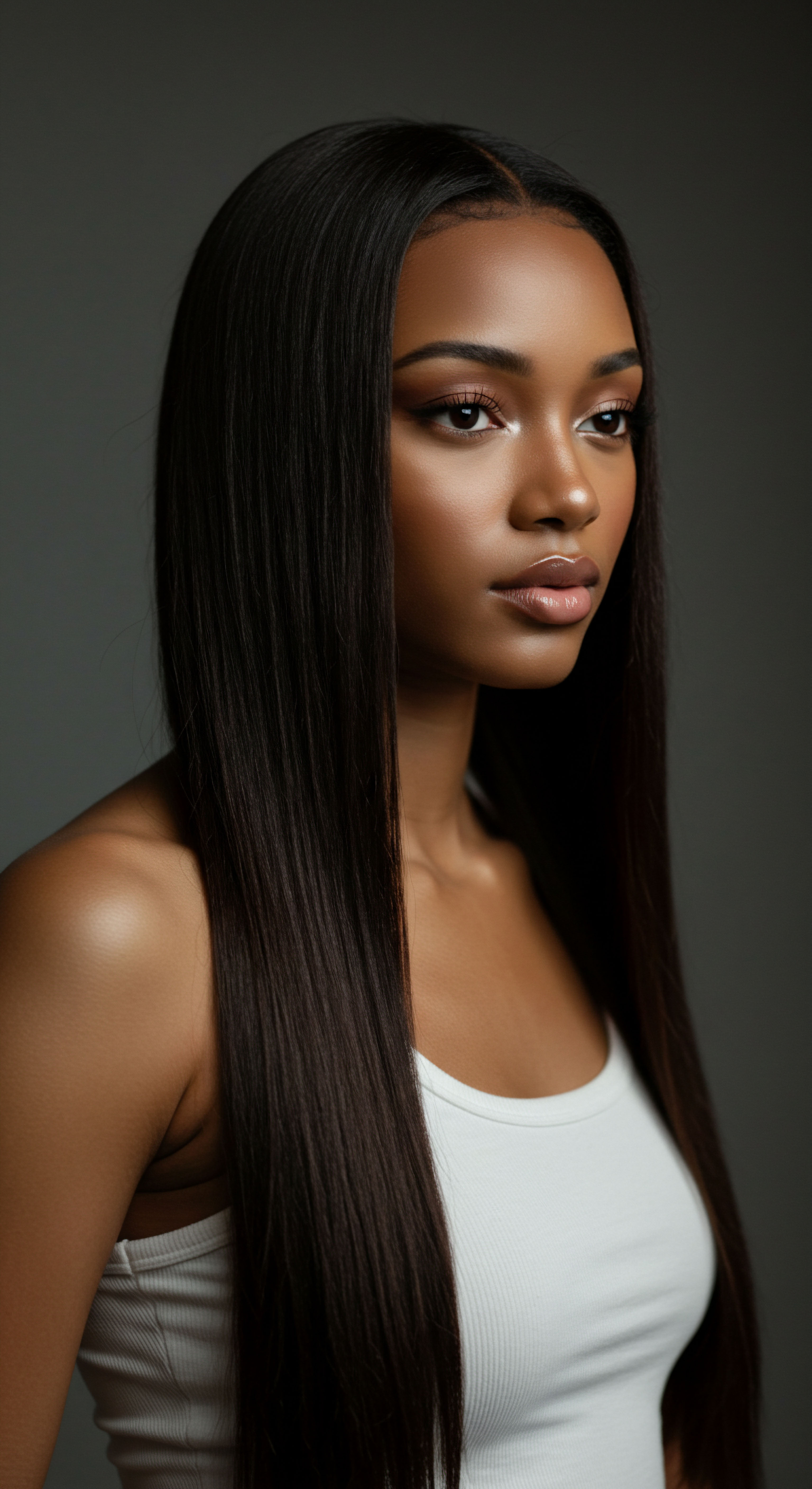
Hair Anatomy Its Protective Layers
At its core, a strand of hair is a marvel of biological engineering. It consists of three primary layers, each serving a distinct purpose in maintaining its strength and appearance. The outermost shield, the Cuticle, is a collection of flattened, overlapping cells, much like shingles on a roof. These cells, when healthy and properly aligned, lie flat, creating a smooth surface that reflects light, resulting in a natural sheen.
They act as the first line of defense against environmental stressors and mechanical friction. Beneath this protective layer lies the Cortex, the heart of the hair fiber. This middle layer comprises millions of keratin protein chains, providing hair with its strength, elasticity, and color. The cortex determines whether hair is straight, wavy, or coiled.
The innermost layer, the Medulla, is not always present in all hair types, particularly finer strands. When present, it forms a central core. The integrity of these layers, particularly the cuticle, is deeply tied to the hair’s environment, especially its pH.
Hair’s inherent resilience rests upon the delicate balance of its internal structure, shielded by the outermost cuticle layer.

The PH Scale A Measure of Balance
The term pH, short for “potential of hydrogen,” provides a measure of a solution’s acidity or alkalinity. This scale ranges from 0 to 14. A value of 7 marks the neutral point, signifying an equal concentration of hydrogen ions (H+) and hydroxyl ions (OH-). Anything below 7 indicates an acidic solution, possessing a higher concentration of hydrogen ions, while values above 7 point to an alkaline or basic solution, with a greater presence of hydroxyl ions.
It is important to note that the pH scale operates logarithmically. This means a shift of just one unit represents a tenfold change in acidity or alkalinity. For instance, a substance with a pH of 4 is ten times more acidic than one with a pH of 5.

What is the Hair’s Acid Mantle?
Our hair and scalp naturally maintain a slightly acidic environment, typically ranging from pH 4.5 to 5.5. This slightly acidic state is crucial for what scientists term the Acid Mantle, a protective film formed by a blend of sebum (natural oils) and sweat. The acid mantle serves as a vital barrier, inhibiting the proliferation of bacteria and fungi on the scalp, thereby guarding against conditions such as dandruff and irritation. For the hair itself, this acidic environment helps to keep the cuticle scales lying flat and tightly closed.
A closed cuticle preserves moisture within the hair shaft, reduces friction between individual strands, and helps to prevent damage, contributing to hair that feels smoother and appears more vibrant. When the pH of the hair or scalp shifts beyond this ideal range, the acid mantle can be compromised, leaving hair more susceptible to external aggressors.
| Component Healthy Hair Strand |
| Ideal PH Range 3.67 to 5.5 |
| Significance Maintains cuticle integrity, reduces frizz, preserves moisture. |
| Component Healthy Scalp |
| Ideal PH Range 4.5 to 5.5 |
| Significance Inhibits microbial growth, regulates sebum production, supports follicle health. |
| Component Understanding these ranges is foundational for effective hair care. |
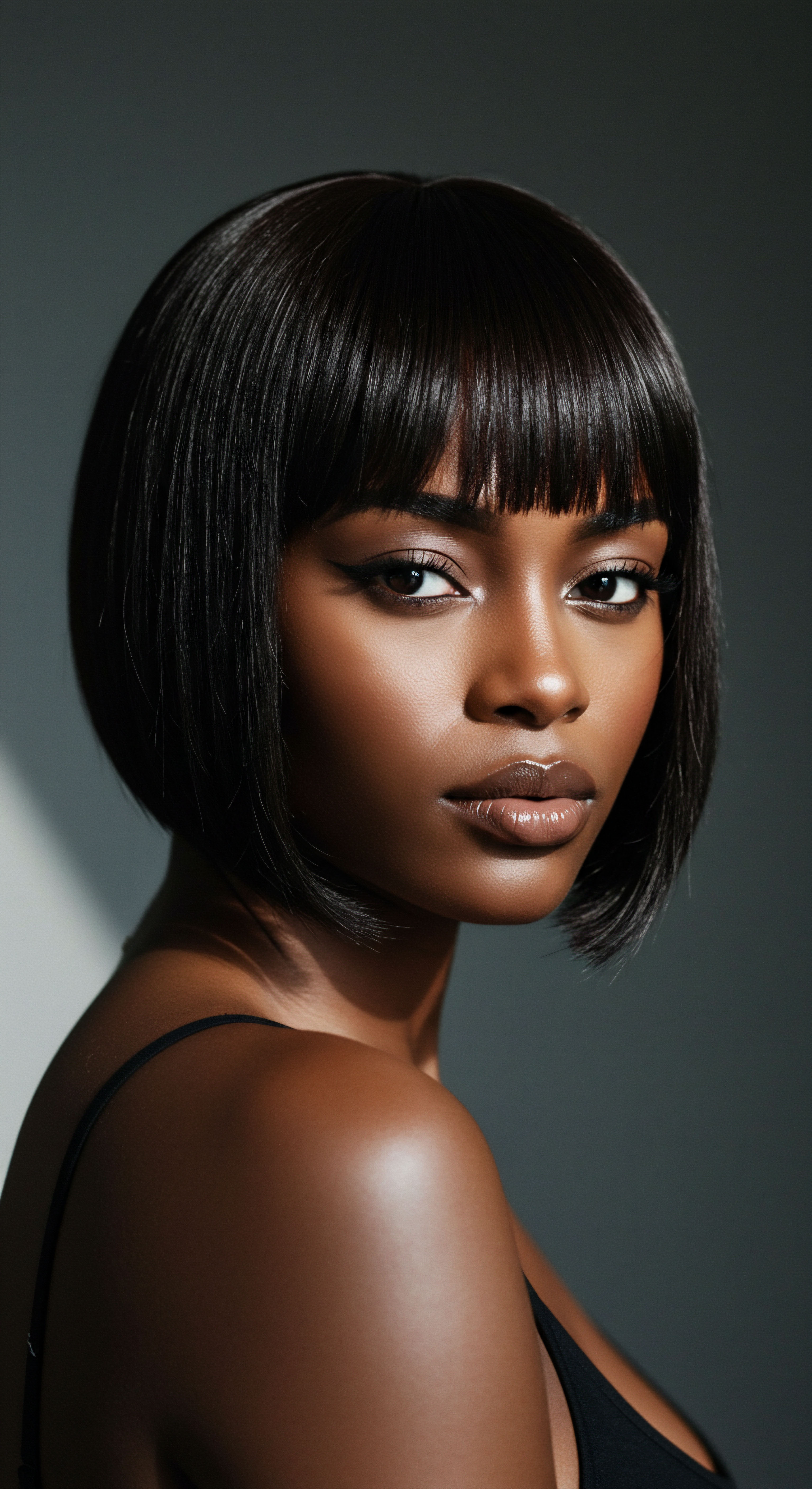
How Does PH Disrupt Hair’s Structure?
When hair is exposed to environments outside its natural, slightly acidic pH range, particularly alkaline conditions, its structural integrity can be compromised. Alkaline substances cause the hair cuticle scales to lift and swell. This opening of the cuticle increases the hair’s porosity, making it more vulnerable to moisture loss and the penetration of damaging agents from the environment.
At a molecular level, extreme pH changes can disrupt the various bonds that hold hair proteins together. Hair’s strength and elasticity depend on disulfide, hydrogen, and ionic bonds. While hydrogen bonds are temporary and break with water or heat, and ionic bonds are affected by pH variations, disulfide bonds are the strongest and are generally broken by harsh chemical treatments like relaxers or bleaches. However, sustained exposure to high alkalinity can weaken ionic bonds and even indirectly impact the stability of the entire protein structure.
A study from 2014, published in the International Journal of Trichology, measured the pH of 123 international shampoo brands. The researchers found that a substantial 61.78% of these popular shampoos had a pH greater than 5.5, with some reaching as high as 9.0. Their conclusion was clear ❉ alkaline pH may increase the negative electrical charge on the hair fiber surface, leading to greater friction between fibers, which in turn can cause cuticle damage and fiber breakage. This empirical finding underscores the direct link between product pH and the physical integrity of hair, demonstrating that seemingly benign daily routines can contribute to damage if not carefully chosen.
Conversely, while less common in everyday products, extremely acidic conditions (below pH 3) can also cause issues. Although acidic environments generally smooth and seal the cuticle, excessive acidity can lead to hair becoming overly rigid and brittle, increasing its susceptibility to snapping. The goal, therefore, is not simply acidity, but a balanced pH that respects the hair’s natural state.

Ritual
The pursuit of vibrant, resilient hair often leads us to question our daily routines, those small, repeated actions that shape our strands. We seek not just temporary fixes, but genuine transformations, a sense of deep care woven into every step. This leads us to consider how our hands-on approach, our chosen products, and our deliberate methods play a role in restoring hair’s natural balance. Here, we move from the elemental understanding of pH to its practical application, recognizing that conscious choices in our hair care rituals can pave the way for tangible improvements.
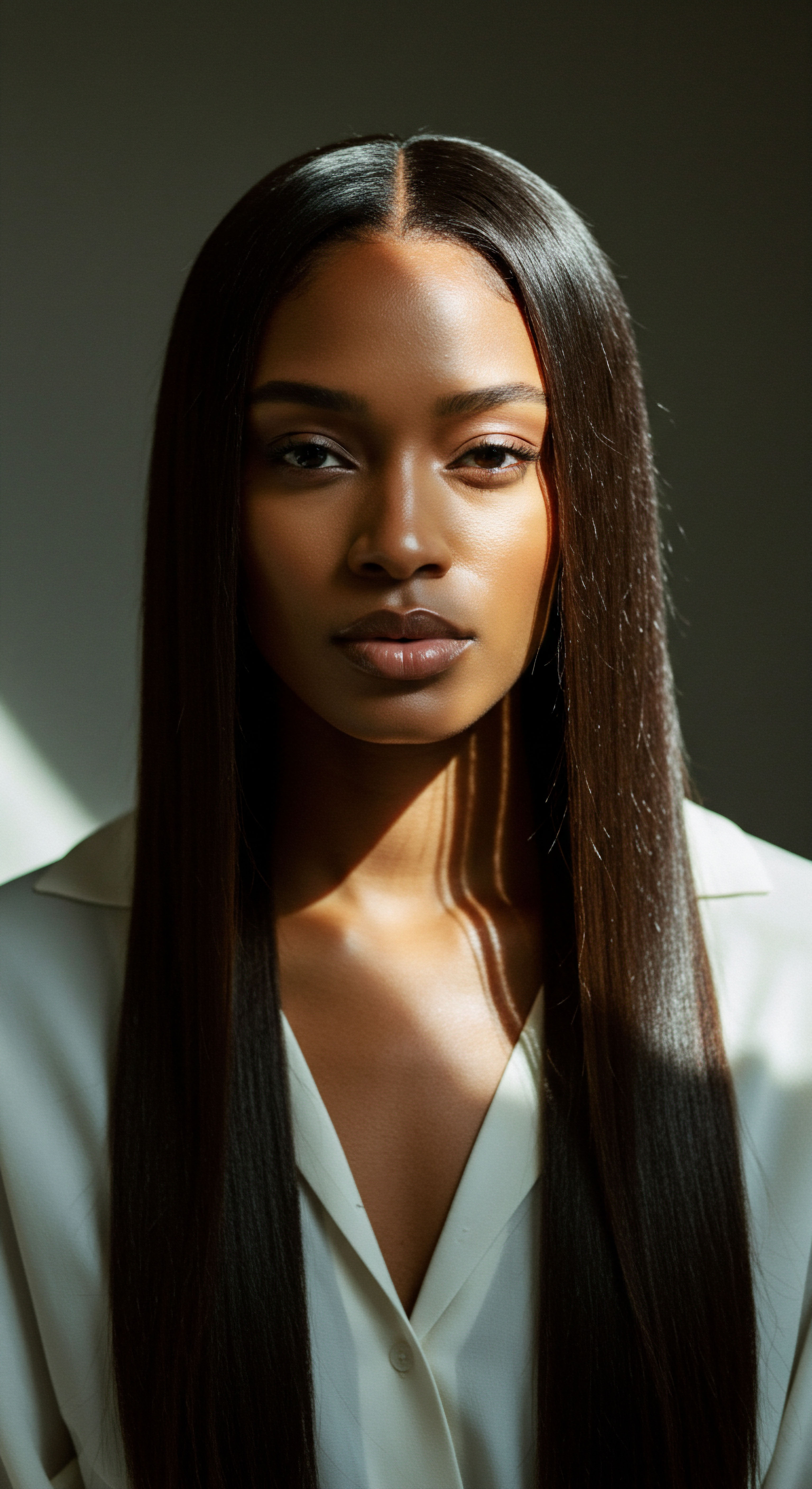
Identifying PH-Balanced Products
Selecting products that respect hair’s natural pH is a pivotal step in any restorative hair care regimen. Many product labels now highlight “pH-balanced” claims, signaling formulations designed to align with hair’s optimal acidity (4.5-5.5). However, it is prudent to look beyond marketing terms.
A truly pH-balanced shampoo or conditioner will aim to maintain this slightly acidic environment, preventing the cuticle from lifting excessively during cleansing and conditioning. For instance, shampoos generally possess a slightly higher pH to effectively cleanse, while conditioners often have a lower pH to help smooth and seal the cuticle afterward.
- PH Strips ❉ A simple way to verify a product’s pH is to use litmus paper or pH test strips.
- Ingredient Awareness ❉ Familiarize yourself with common ingredients. Highly alkaline agents like strong sulfates or certain harsh detergents can disrupt pH.
- Brand Transparency ❉ Some brands are transparent about the pH of their products, making informed choices easier.
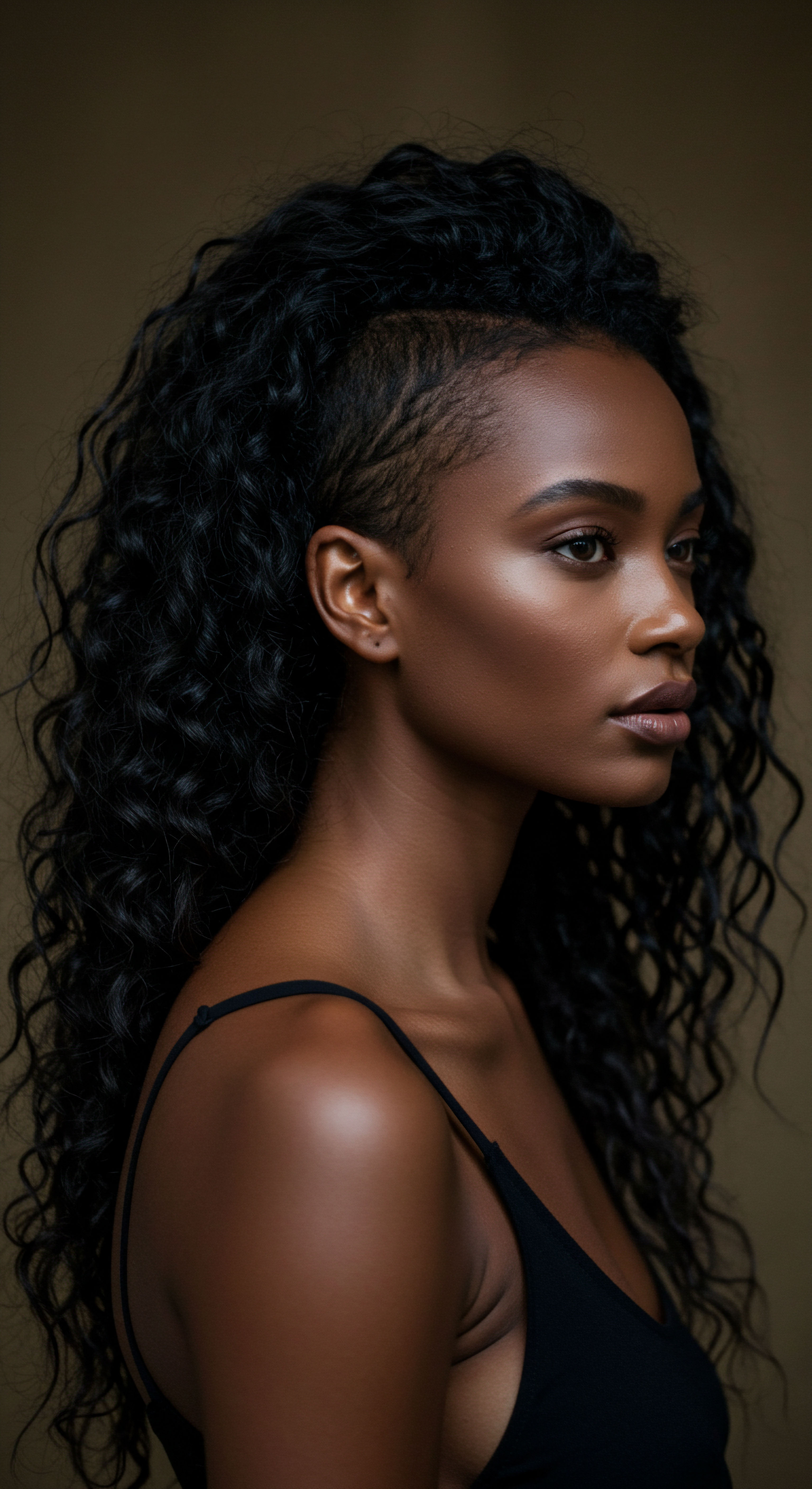
Cleansing with Thoughtful Care
The act of cleansing is often the first opportunity to either support or compromise hair’s pH balance. Traditional shampoos, especially those with strong detergents, can be quite alkaline, stripping the hair of its natural oils and causing the cuticle to swell significantly. This leads to increased friction and potential damage. For textured hair, which is often drier and more susceptible to cuticle manipulation, choosing a lower pH shampoo is particularly beneficial.
Consider practices such as Low-Poo or Co-Washing (conditioner-only washing). Low-poo cleansers contain milder surfactants and are formulated to be gentler, often with a pH closer to hair’s natural state. Co-washing, by its very nature, uses conditioning agents to cleanse, inherently maintaining a more acidic environment. These methods minimize the disruption to the hair’s acid mantle, helping to preserve its protective barrier and reduce the likelihood of excessive cuticle lifting.
Conscious product selection and mindful application methods form the bedrock of a reparative hair care practice.
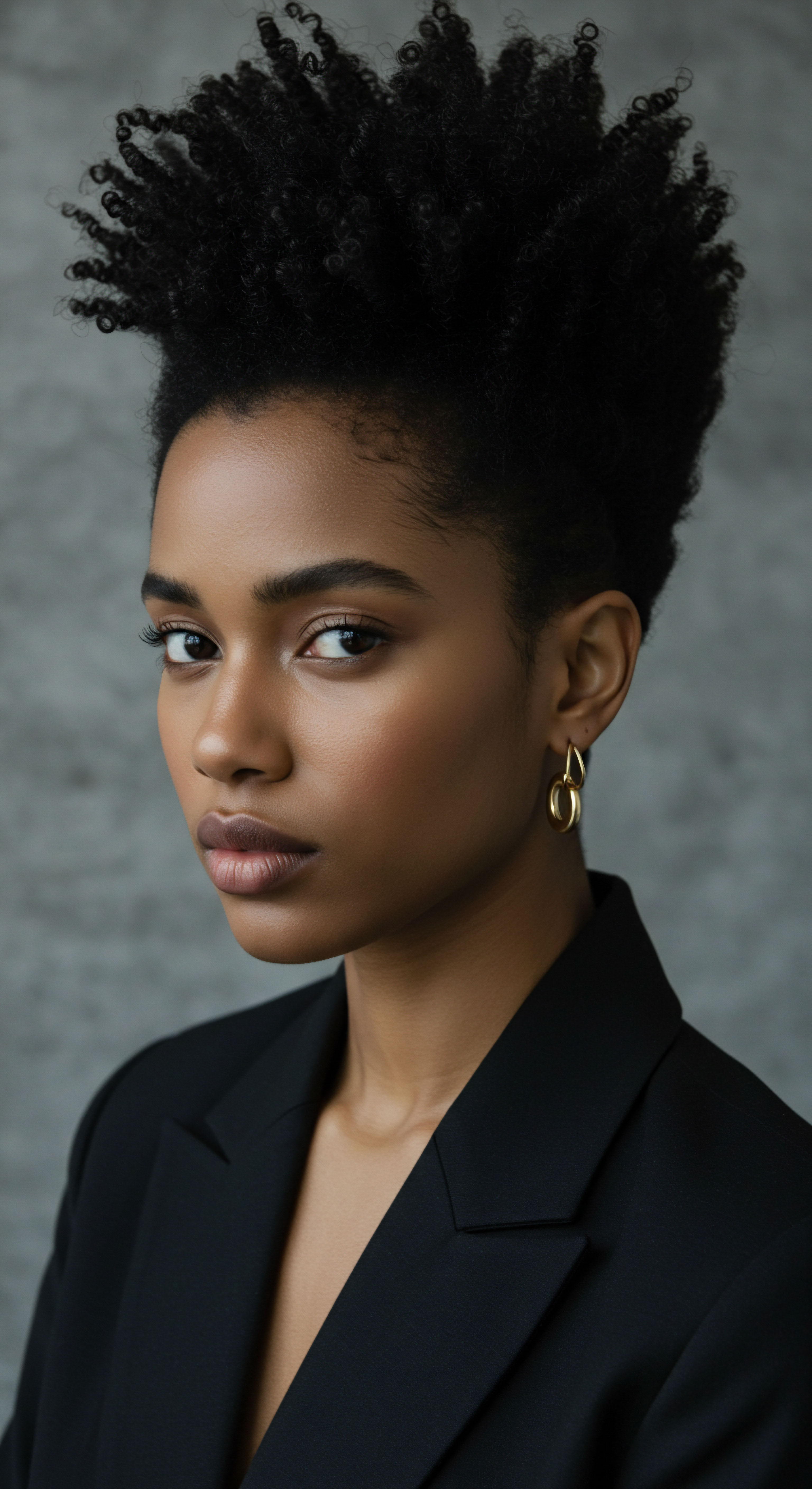
Can Product Labels Guide PH-Balanced Care?
While many products claim to be pH-balanced, the actual pH can vary. A study from 2014, cited in the International Journal of Trichology, examined the pH of various shampoos and found that only 38% of popular brand shampoos had a pH of 5.0 or less, compared to 75% of salon shampoos. This suggests that professional-grade products are often more consistently formulated for optimal hair health. When reviewing labels, look for explicit pH values or phrases like “pH-optimized for hair.” Be wary of ingredients that are known to be highly alkaline if you are seeking to minimize pH disruption, such as strong lye-based soaps.

The Art of Rinsing Acidic After-Care
The post-cleansing rinse is a crucial, yet often overlooked, step in pH-balanced care. After using any cleansing agent, even a pH-balanced one, an acidic rinse can help to swiftly bring the hair back to its optimal pH, effectively sealing the cuticle. Apple cider vinegar (ACV) rinses are a popular natural choice, known for their slightly acidic nature. Diluted ACV, when used as a final rinse, helps to smooth the cuticle, reduce frizz, and enhance shine by encouraging the cuticle scales to lie flat.
This practice is especially beneficial for textured hair, where cuticle health directly influences moisture retention and curl definition. By swiftly restoring the hair’s slightly acidic environment, these rinses help to lock in moisture and protect the inner cortex, preparing the hair for subsequent styling and reducing its susceptibility to environmental stressors.

Masks and Their PH A Closer Look
Deep conditioning treatments and masks play a vital role in hair repair. Their effectiveness can be significantly enhanced by considering their pH. Masks formulated with a slightly acidic pH can assist in closing the cuticle, thereby locking in the nourishing ingredients they provide. For instance, some protein-based treatments might have a pH closer to neutral to allow for better protein penetration, but should ideally be followed by an acidic conditioner to seal the cuticle once the treatment is complete.
When choosing a mask, consider its purpose. If the mask is meant to deeply penetrate and repair, its pH might be slightly higher to allow for better absorption, but it should always be followed by a product that brings the hair back to its acidic range. For daily or weekly conditioning, a mask with a pH between 3.5 and 5.0 is ideal for maintaining cuticle health and overall hair vitality.
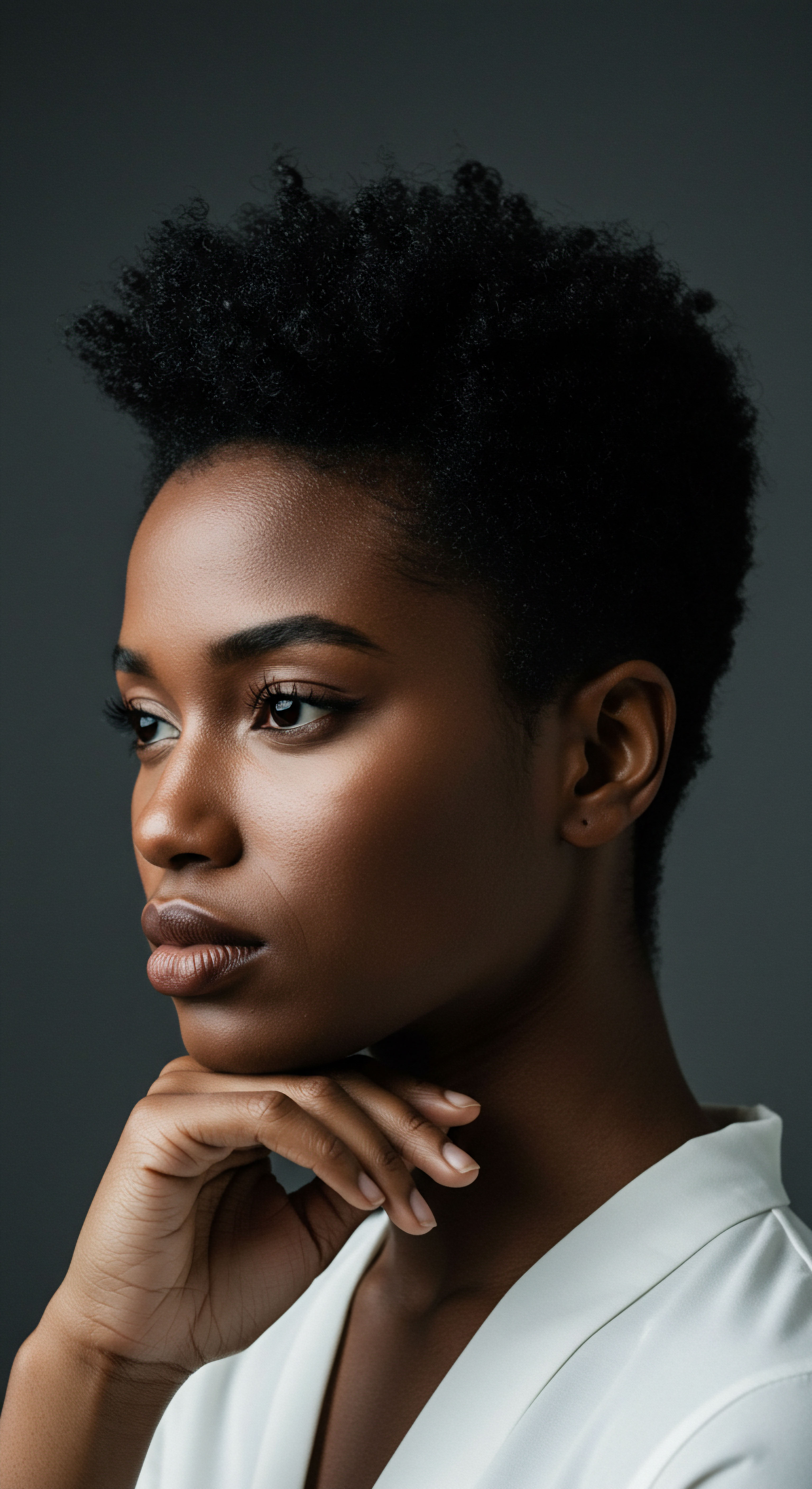
Relay
As we move beyond the immediate routines, a deeper question emerges ❉ can consistent pH-balanced care truly reverse existing hair damage, or does it merely mask the symptoms? This inquiry compels us to consider the intricate dance between molecular science, environmental impacts, and the profound cultural connections we hold with our hair. The answer, as with many complex aspects of our physical selves, is not a simple yes or no, but a layered understanding that respects both the limits of biology and the power of dedicated care.
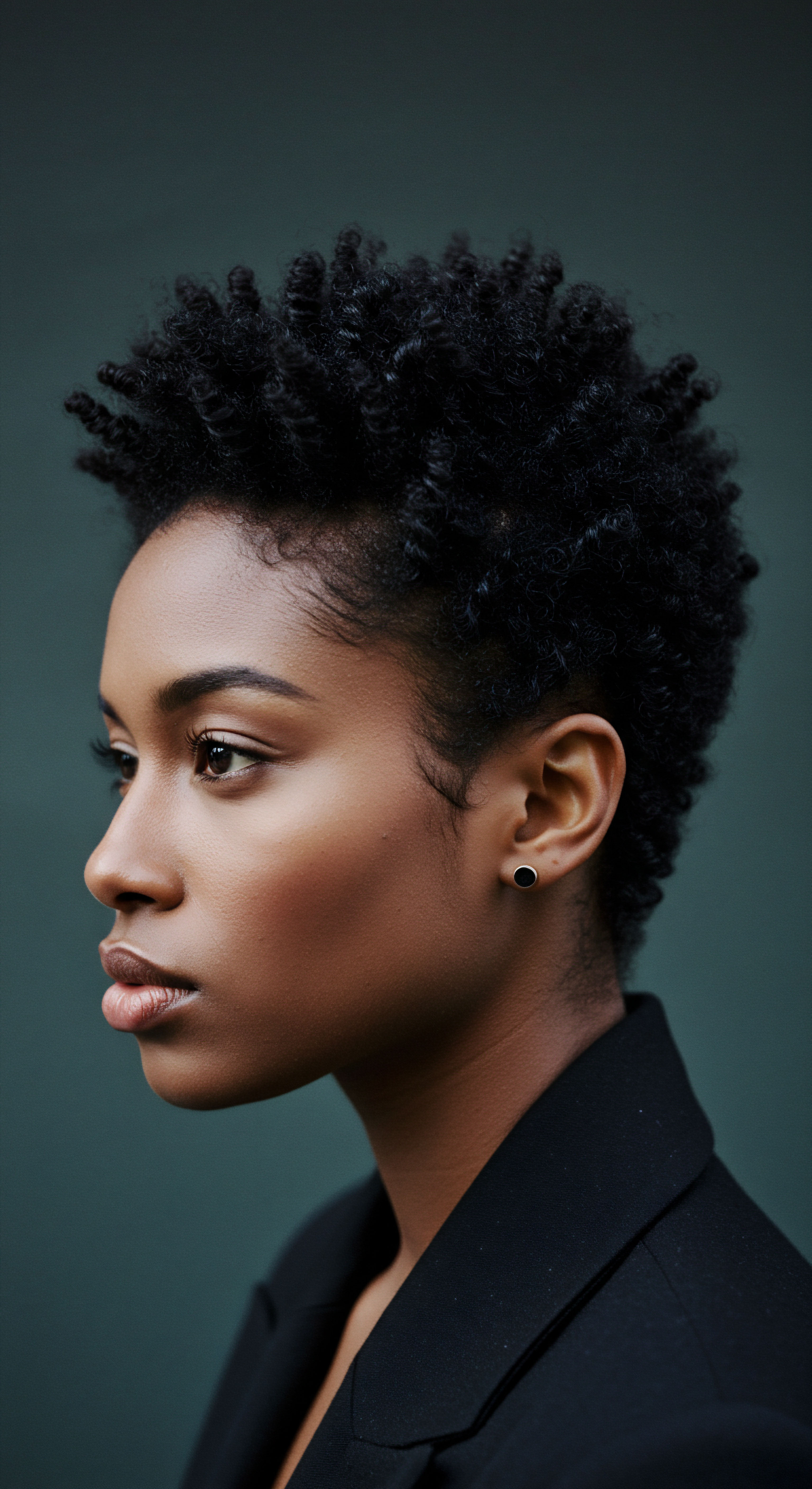
Is True Damage Reversal Possible for Hair?
The term “reversal” in hair care requires careful consideration. Hair, being a non-living tissue once it emerges from the scalp, cannot truly heal in the biological sense that skin or muscle can. Damage to the hair shaft, particularly severe structural alterations to the cortex or permanent breakage of disulfide bonds, is largely irreversible in a complete sense. However, consistent pH-balanced care can significantly mitigate the appearance of damage, improve hair’s physical properties, and prevent further degradation.
What pH-balanced care can achieve is a restoration of the hair’s outer cuticle layer to its optimal, closed state. When the cuticle scales lie flat, hair exhibits reduced frizz, increased shine, and improved manageability. This is a form of functional repair, where the hair’s protective barrier is reinforced, allowing it to retain moisture more effectively and better withstand external stressors.
Products with acidic pH, for example, help to reseal the cuticle, which can prevent color from leaching out and improve moisture retention, reducing breakage and frizz. This is not undoing the internal structural changes, but rather creating an optimal external environment for the hair to perform its best.
While hair, being non-living, cannot biologically heal, consistent pH-balanced care can significantly improve its physical appearance and resilience.

A Deeper Look at Hair’s Molecular Response to PH
The impact of pH extends to the very molecular bonds that give hair its strength and shape. Hair proteins, primarily keratin, are held together by various bonds ❉ disulfide, hydrogen, and ionic (salt) bonds. Ionic bonds, which contribute significantly to hair’s strength and elasticity, are particularly susceptible to pH variations. When hair is exposed to highly alkaline conditions, these ionic bonds can break.
A study published in Cosmetics (2014) titled “The Shampoo pH Can Affect the Hair ❉ Myth or Reality?” offers a significant data point. Researchers analyzed 123 shampoos and found that alkaline pH (above 5.5) increased the negative electrical charge on the hair fiber surface, leading to greater friction and cuticle damage. Conversely, lower pH shampoos reduced frizz by generating less negative static electricity. This highlights how product pH directly influences the physical state of the cuticle and the electrostatic interactions between hair fibers, contributing to or reducing the perception of damage.
Consider also the role of specific acidic treatments. Acidic bonding treatments, for instance, are designed to restore hair’s natural acidity and reinforce weakened bonds within the hair strands. These treatments, often containing ingredients like citric acid, work at a molecular level to fortify the structural framework of the hair, leading to stronger, smoother, and more lustrous strands. This molecular intervention is a key aspect of how pH-balanced care works to improve the hair’s condition, even if it cannot fully reverse all forms of deep internal damage.
| PH Level Acidic (3.5-5.5) |
| Effect on Cuticle Closed, smooth, tight |
| Effect on Hair Bonds Ionic bonds stable, hydrogen bonds maintain flexibility |
| Resulting Hair Condition Shiny, smooth, less frizz, moisture retention |
| PH Level Alkaline (above 7) |
| Effect on Cuticle Lifted, swelled, open |
| Effect on Hair Bonds Ionic bonds break, disulfide bonds susceptible to damage |
| Resulting Hair Condition Dry, brittle, frizzy, porous, prone to breakage |
| PH Level Maintaining optimal pH helps preserve hair's structural integrity. |

The Interplay of PH, Environment, and Textured Hair Health
Textured hair, with its unique coil patterns and often more open cuticle structure, can be particularly sensitive to pH imbalances. The natural twists and turns of coily and curly hair mean that the cuticle scales may not lie as flat as on straight hair, making it inherently more prone to moisture loss and dryness. This inherent characteristic makes the external environment and product choices even more impactful.
Environmental factors also play a significant, yet often underestimated, role in disrupting hair’s pH. Exposure to pollution, UV radiation, and even hard water can break down the hair’s protective acid mantle and alter its pH. Hard water, with its high mineral content, can leave mineral deposits on the hair, increasing its alkalinity and contributing to dullness and breakage. These external aggressors compound the effects of chemically induced damage, making a consistent, pH-focused care regimen even more critical for textured hair.
Historically, many traditional hair practices and even some contemporary products used for textured hair have involved highly alkaline substances, such as lye-based relaxers or certain cleansing agents. While these may achieve desired styling outcomes, their high pH drastically opens the cuticle and can cause significant protein loss and structural damage. This historical context underscores the importance of modern pH-balanced formulations, which aim to achieve desired results with minimal disruption to hair’s natural chemistry.
Beyond topical products, internal wellness also contributes to hair health, though its direct impact on hair shaft pH is less understood. Diet, hydration, and overall health contribute to the quality of hair as it grows from the follicle. While these factors do not directly alter the pH of existing hair, they lay the groundwork for healthier new growth, which in turn benefits from pH-balanced care once it emerges. A holistic approach to hair wellness acknowledges this interconnectedness, recognizing that true vitality springs from both internal harmony and external respect for hair’s delicate balance.
- Hydration ❉ Adequate water intake supports overall bodily functions, including healthy hair growth.
- Nutrition ❉ A balanced diet rich in vitamins and minerals contributes to the strength of new hair strands.
- Stress Management ❉ Chronic stress can impact hair growth cycles and overall health.

Reflection
The path to truly healthy, resilient hair is not a destination, but a continuous conversation, a quiet understanding that deepens with each thoughtful choice. We began by peering into the microscopic architecture of a single strand, discovering the profound role of pH in its fundamental well-being. We then moved through the rituals, those intentional acts of cleansing and conditioning that, when guided by the wisdom of balance, can bring about visible improvements.
Finally, we considered the intricate layers of reversal, acknowledging that while some damage cannot be fully erased, a consistent, pH-attuned approach offers a powerful mitigation, a nurturing of hair’s inherent capacity for strength and shine. This journey is a testament to the quiet power of science interwoven with gentle care, allowing each coil and curl to express its fullest, most vibrant self.
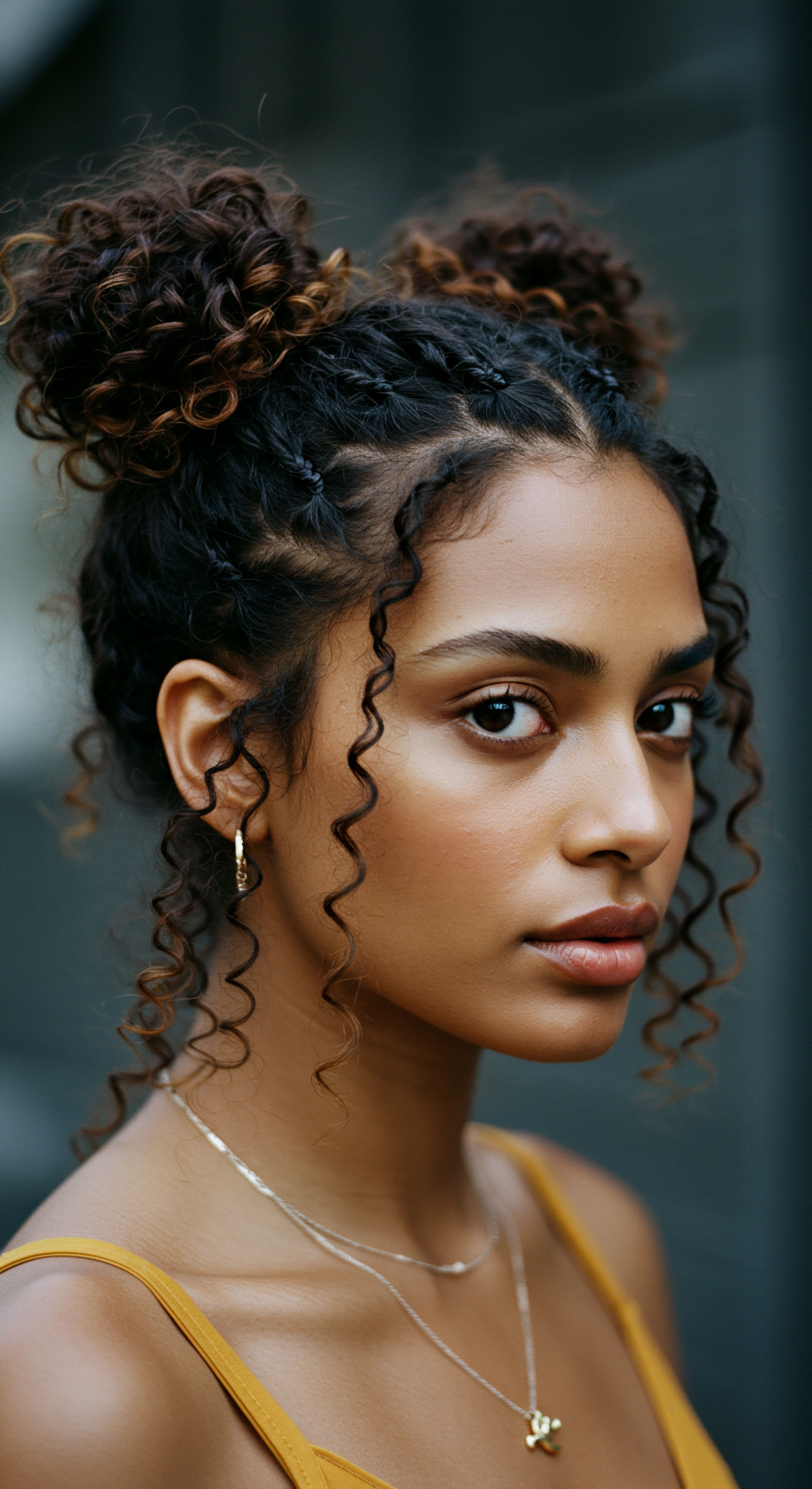
References
- Gavazzoni Dias, M. F. R. de Almeida, A. M. et al. (2014). The Shampoo pH can Affect the Hair ❉ Myth or Reality? International Journal of Trichology, 6(3), 95–99.
- D’Souza, P. & Rathi, S. K. (2015). Hair Cosmetics ❉ An Overview. International Journal of Trichology, 7(1), 2–15.
- Faria, C. (2013). Hair Structure and Chemistry. Cosmetics & Toiletries, 128(9), 614-619.
- Robbins, C. R. (2012). Chemical and Physical Behavior of Human Hair. Springer.
- Khanna, N. (2012). Cosmetic Formulation of Skin Care Products. Springer.
- Barel, A. O. Paye, M. & Maibach, H. I. (Eds.). (2014). Handbook of Cosmetic Science and Technology. CRC Press.
- Sakamoto, K. & Maibach, H. I. (Eds.). (2017). Hair and Hair Care. CRC Press.
- Schueller, R. & Romanowski, P. (2019). Conditioning Agents for Hair and Skin. CRC Press.
- Procter & Gamble. (2020). Hair and Scalp Science. (Internal publication, not publicly available).
- Ruetsch, S. B. et al. (2001). The effect of water on the mechanical properties of human hair. Journal of Cosmetic Science, 52(6), 333-345.
- Dias, M. F. R. G. (2015). Hair cosmetics ❉ an overview. International Journal of Trichology, 7(1), 2.